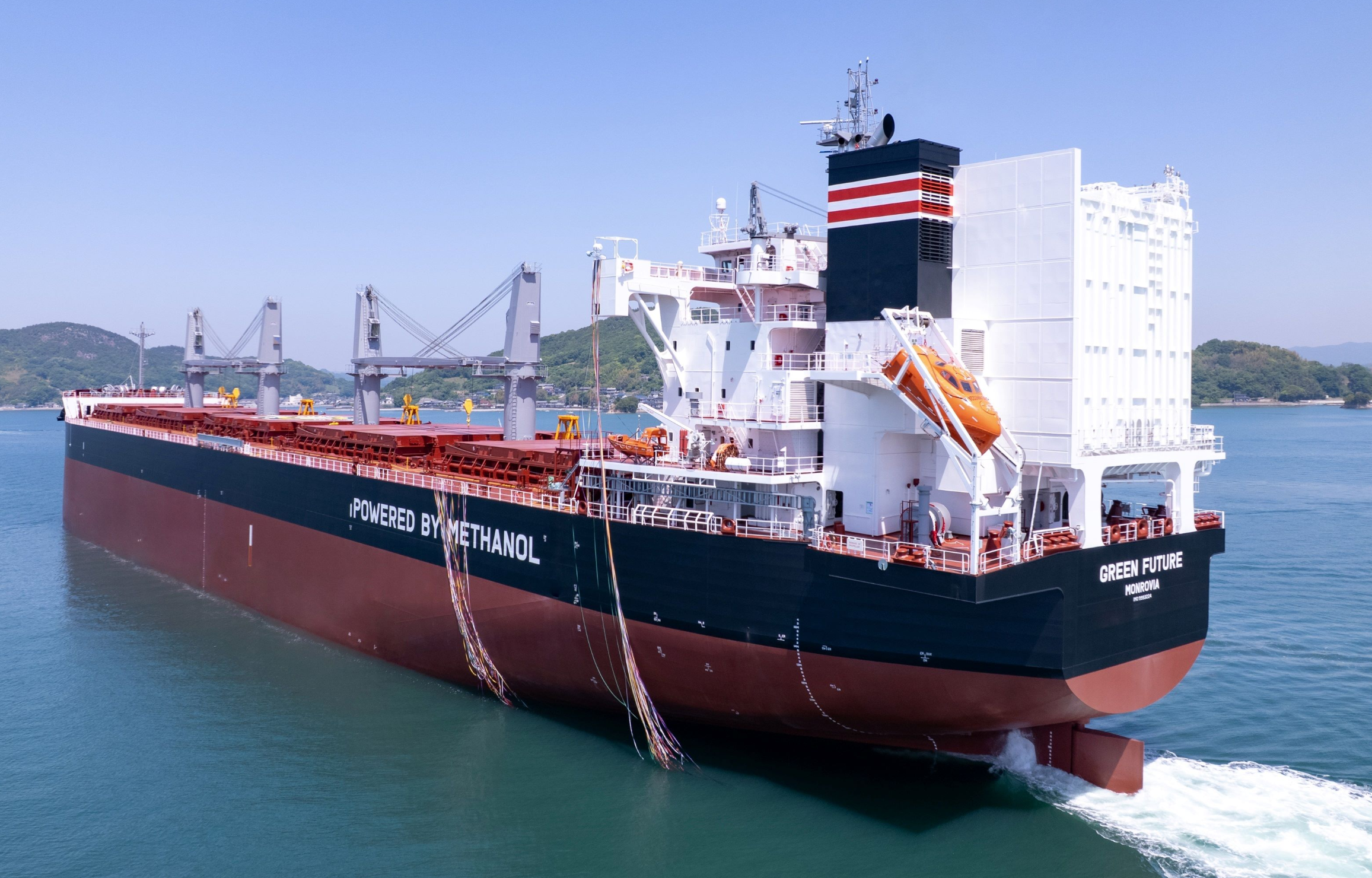TSUNEISHI SHIPBUILDING Co., Ltd. announced the delivery of the world’s first methanol dual-fuelled bulk carrier in the 65,700 deadweight ton class, named “Green Future”, at its TSUNEISHI Factory on 13 May.

Green Future will be chartered by NYK Bulk & Projects Carriers, a subsidiary of Nippon Yusen, from Kambara Kisen. This vessel maintains the high cargo capacity and fuel efficiency characteristic of the TESS66 series, while enabling more sustainable operations through the use of methanol as a fuel.
By using methanol, the vessel is able to reduce emissions of nitrogen oxides (NOx) by up to 80%, sulfur oxides (SOx) by up to 99%, and carbon dioxide (CO2) by up to 10% compared to conventional heavy fuel oil. When green methanol is used, the vessel also contributes to carbon neutrality, significantly reducing is environmental impact.
The methanol fuel tank has been positioned to maximise safety and facilitate smooth cargo handling while maintaining loading efficiency. With a deadweight of 65,700 mt and a cargo hold capacity of 81,500 m3, the vessel inherits the exceptional loading performance of TESS66, which ranks among the highest in the Ultramax category. It is also equipped with a fuel-efficient main engine and TSUNEISHI’s proprietary AEROLINE technology to reduce wind resistance, delivering superior fuel performance.
Tsuneishi Shipbuilding stated that the company will continue to build methanol dual-fuel vessels at its overseas plants and continue to pursue technological innovations to contribute to a more sustainable maritime industry and the global environment.
Last month, the first methanol dual-fuel 5,900 TEU container ship built by Tsuneishi Group (Zhoushan) Shipbuilding was officially laid keel, and it is the largest size container ship built by Tsuneishi Shipbuilding so far. The vessel is equipped with a methanol dual-fuel engine manufactured by Mitsui E&S — “Mitsui-MANB&W 6G80ME-C10.5-LGIM-EGRTC”, which is the first methanol dual-fuel equipment actually put into use in Japan. This is the first methanol dual-fuel engine actually put into service in Japan.


